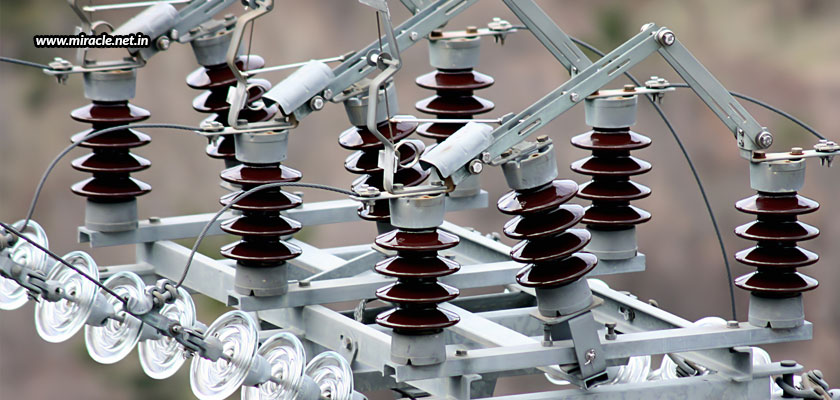An insulator is used to prevent the unwanted flow of current from the energized conductor or conducting parts in an electrical system. It provides very high resistance so that no current can practically flow through it. Insulators generally consist of very small amount of free electrons, which results in almost no electrical current being carried. When a sufficiently large amount of voltage (known as “breakdown voltage”) is applied, insulators become conductive; the process being called “insulation breakdown”.
To have insulators perform efficiently and effectively, the insulating materials must have certain properties. The materials to be used to manufacture insulated cables and wires must be flexible. Conversely, the materials used to support overhead power lines must be mechanically very strong. This depicts that the desirable properties of insulating material depends upon the type of applications it is used in. But, the two most important properties that every insulating material must have include high resistivity and dielectric strength. Resistivity is the property that measures how strongly the material opposes the flow of electric current. And, dielectric strength is the ability of the material to withstand electric stress without breaking down, which is measured in kilovolts per millimeter (kV/mm).
The list of some of the most commonly used insulating materials includes rubber, plastic, mica, Teflon, paper, glass, ceramic, porcelain, and PVC. And, the most common types of insulators include pin insulators, strain insulators, suspension insulators, and shackle insulators, which are all used most popularly in overhead power lines. Other than these, there are many other insulators you may or may not know about. These include –
Post Insulators
Post insulators, with high number of petticoats and rain sheds, are mostly used in substations and overhead lines. There are two types of post insulators – line post insulators used for voltages up to 132 kV, and station post insulators used for low and very high voltages.
Stay Insulators
As the name suggests, stay insulators are those used in stay wires. They are made up of porcelain, and are designed such that in case of insulator breakage, the stay wire does not fall to the ground.
Polymer Insulators
Composed of fiber glass rods, covered by polymer weather sheds, polymer insulators are 90% lighter than porcelain insulators, while providing better strength. Other materials used to construct polymer insulators include silicon rubber, PTFE, EPM, and EPDM.
Glass Insulators
Glass insulators started being used in the 18th century for telegraph and telephone lines, which were then replaced by ceramic and porcelain insulators in the 19th century. To overcome this, toughened glass insulators were introduced, which became popular due to their longer lifespan.
Long Rod Insulators
Long rod insulators are porcelain rods with outside weather sheds and metal end fittings. There are no metal parts between the units in long rod insulators, which helps to increase their strength. These insulators can be used at both suspension and tension locations.
Insulators are used within transformers, which are a very important part of the electrical systems. Without transformers, we cannot receive safe amount of electricity to be used within our homes and offices. You can get the best quality power transformers in India at Miracle Electronics.




